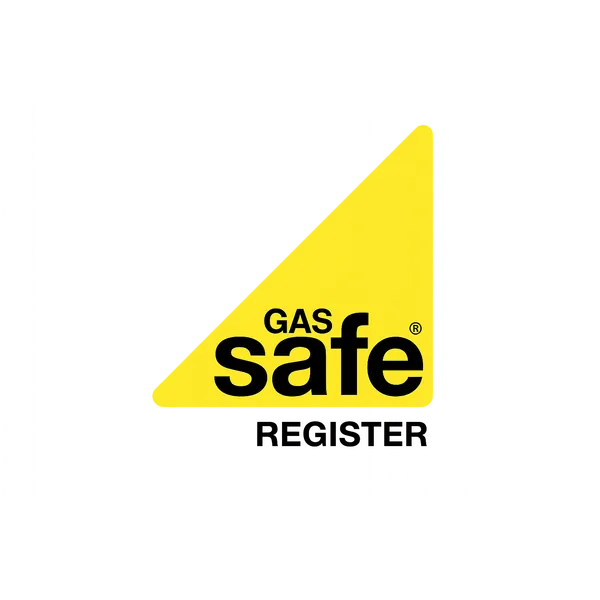Step-by-Step: What to Expect During Your Heat Pump Installation
Making the switch to a heat pump is one of the most significant energy efficiency upgrades you can make to your home. While the benefits are substantial—lower running costs, reduced carbon emissions, and eligibility for government grants—many homeowners feel uncertain about the installation process itself. At CRG Direct, we believe transparency is key, which is why we've created this comprehensive guide to walk you through exactly what to expect from survey to commissioning.
Initial Survey and Assessment: The Foundation of Success
The Site Survey Process
Your heat pump journey begins with a thorough site survey conducted by one of our MCS-accredited engineers. This typically takes 2-3 hours and involves:
- Heat loss calculations: We measure room dimensions, assess insulation levels, and calculate your property's specific heating requirements
- Existing system evaluation: Reviewing your current heating system, radiators, and pipework
- External unit placement: Identifying optimal locations considering noise, airflow, and accessibility
- Internal unit positioning: Planning where your new heating controls and hot water cylinder will be installed
- Electrical assessment: Checking your consumer unit and electrical capacity
Design and Quotation
Following the survey, our technical team creates a bespoke system design and provides a detailed quotation. This includes:
- Specific heat pump model recommendations
- Any necessary upgrades to your heating distribution system
- Timeline estimates and project schedule
- Complete cost breakdown with no hidden fees
Pre-Installation Preparation: Setting the Stage
What You Need to Do
Before installation day, there are a few simple preparations:
- Clear access routes to the installation areas
- Ensure parking availability for our installation vehicles
- Make arrangements for pets and young children during noisy work periods
- Consider temporary heating alternatives if your existing system will be disconnected
Our Pre-Installation Checklist
Our team handles all the technical preparations:
- Ordering your specific heat pump model and components
- Scheduling certified electricians and plumbing specialists
- Arranging any necessary building control notifications
- Preparing detailed installation plans and risk assessments
The Installation Process: Day-by-Day Breakdown
Day 1: External Unit Installation and Pipework
Typical Duration: 6-8 hours Disruption Level: Moderate
Our installation team arrives promptly at 8:00 AM and begins with:
- External unit placement: Installing the weatherproof mounting frame and securing the heat pump unit
- Pipework installation: Running insulated flow and return pipes from the external unit to your property
- Electrical connections: Installing the outdoor electrical supply and communication cables
- Drilling and sealing: Creating neat penetrations through walls with professional weather sealing
Day 2: Internal System Installation
Typical Duration: 6-8 hours
Disruption Level: Moderate to High
The focus shifts indoors with:
- Hot water cylinder installation: Positioning and connecting your new high-efficiency cylinder
- Heating controls setup: Installing smart thermostats and control panels
- Pipework connections: Integrating the new system with your existing heating distribution
- Radiator upgrades: If required, replacing older radiators with low-temperature compatible models
Day 3: Electrical Work and System Integration
Typical Duration: 4-6 hours Disruption Level: Low to Moderate
Our certified electricians complete the technical integration:
- Consumer unit upgrades: Installing dedicated circuits and protective devices
- Control wiring: Connecting all system components and ensuring proper communication
- Safety testing: Comprehensive electrical safety checks and certification
- System programming: Configuring heating schedules and temperature settings
External Unit Placement: Key Considerations
Optimal Location Selection
We consider multiple factors when positioning your external unit:
- Noise management: Placing units away from bedroom windows and neighbouring properties
- Airflow requirements: Ensuring at least 1 metre clearance on all sides for optimal performance
- Accessibility: Maintaining easy access for future maintenance and servicing
- Aesthetics: Minimising visual impact while maintaining functionality
- Planning regulations: Adhering to permitted development rights and any local restrictions
Common Placement Options
- Side or rear gardens: Most popular choice offering good airflow and noise management
- Wall mounting: Space-saving solution for properties with limited ground space
- Flat roof installations: Ideal for urban properties without garden space
- Garage or outbuilding locations: Protecting the unit from extreme weather conditions
Internal Work Requirements: What Changes Inside Your Home
Heating Distribution Upgrades
Depending on your existing system, we may recommend:
- Radiator upgrades: Installing larger, low-temperature radiators for optimal efficiency
- Underfloor heating: The ideal companion for heat pumps, offering superior comfort
- Pipework modifications: Ensuring your system can operate at lower flow temperatures
- Hot water storage: Installing a well-insulated cylinder for efficient hot water production
Control System Installation
Modern heat pumps feature sophisticated control systems:
- Smart thermostats: Wi-Fi enabled controls accessible via smartphone apps
- Weather compensation: Automatic adjustment based on outdoor temperatures
- Zoning capabilities: Individual room temperature control for enhanced comfort
- Monitoring features: Real-time performance tracking and efficiency reporting
Testing and Commissioning: Ensuring Optimal Performance
Comprehensive System Testing
Before handing over your new system, we conduct rigorous testing:
- Pressure testing: Verifying all pipework connections are leak-free
- Electrical safety checks: Ensuring all components meet current regulations
- Performance verification: Testing heating and hot water production capabilities
- Noise level assessment: Confirming the system operates within specified limits
- Control system validation: Ensuring all smart features function correctly
Commissioning and Handover
The final stage includes:
- System balancing: Optimising flow rates through each radiator for even heating
- Efficiency calibration: Setting the heat pump for optimal seasonal performance
- User training: Comprehensive demonstration of all controls and features
- Documentation handover: Providing MCS certificates, warranty documents, and user manuals
- Aftercare briefing: Explaining our comprehensive maintenance and support services
Timeframes and Disruption Management
Typical Project Duration
- Standard installation: 3-5 days for most average-sized properties
- Complex installations: 5-7 days for larger properties or those requiring significant upgrades
- Weather considerations: We build in contingency for adverse weather conditions
- Unexpected challenges: Our experienced teams can handle most surprises without significant delays
Minimising Disruption
We employ several strategies to keep disruption to a minimum:
- Contained work areas: Using protective sheeting and dust management systems
- Organised workflow: Sequencing tasks to complete noisy work in concentrated periods
- Daily clean-up: Leaving your home tidy at the end of each working day
- Clear communication: Regular updates on progress and any schedule changes
CRG Direct's Professional Installation Standards
Quality Assurance
Every CRG Direct installation meets our exacting standards:
- MCS certification: All installations certified under the Microgeneration Certification Scheme
- Gas Safe registered engineers: Qualified professionals handling all heating system work
- NICEIC electricians: Certified electrical installations meeting current regulations
- Comprehensive warranties: Manufacturer warranties backed by our installation guarantee
- Quality materials: Using only premium components from trusted manufacturers
Customer Care Commitment
Our service extends beyond the installation itself:
- Dedicated project manager: Single point of contact throughout your project
- Transparent communication: Regular updates and no surprise costs
- Post-installation support: 24/7 emergency call-out service
- Performance monitoring: Optional remote monitoring to ensure ongoing efficiency
- Maintenance packages: Scheduled servicing to protect your investment
The Final Result: Enjoying Your New Heating System
Once commissioning is complete, you can start enjoying the benefits of your new heat pump:
- Consistent comfort: Even heating throughout your home
- Lower running costs: Significant savings compared to traditional heating systems
- Environmental benefits: Drastically reduced carbon emissions
- Government incentives: Eligibility for schemes like the Boiler Upgrade Scheme
- Future-proofing: A heating system ready for the net-zero transition
Ready to Start Your Heat Pump Journey?
Understanding the installation process is the first step toward enjoying the many benefits of heat pump technology. At CRG Direct, we've installed hundreds of heat pumps across the UK, and our experienced team is ready to guide you through every stage of your project.
Take the next step towards energy-efficient heating—contact our expert team today for a free, no-obligation survey and quotation. Let us show you why thousands of homeowners trust CRG Direct for their renewable heating solutions.















